Preview: Cassandra Wye and the Settle Stories Star Party
September 25, 2015
Cassandra Wye is storyteller who combines the roles of performer, teacher, trainer and director.
Since founding her company, Stories in Motion, she has told her stories all over the world, often to audiences of over four figures.
On October 10th, she will bring two specially-commissioned shows to Settle as part of Settle Stories’ Star Party event. Tales from the Cosmos: Stories from the Daytime Sky is an interactive storytelling event suitable for all ages, while Tales from the Cosmos: Stories of the Night-time Sky is aimed at adults, though children are also welcome.
Since 1991, Cassandra’s approach to storytelling, Stories in Motion, has taken her around the globe from the heart of the rainforest to the roof of the world, to work in temples and train stations, forests and festivals, in and out of theatres, festivals and schools, on land and at sea.
TSOTA caught up with the spoken word performer as she prepares to add Settle to her global list of destinations.
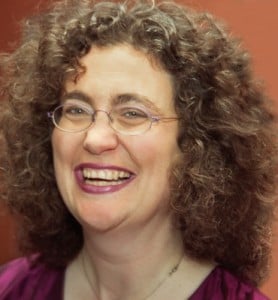
Cassandra Wye
TSOTA: How did you become a professional storyteller?
CW: I fell into story telling by accident, via the flying trapeze! I went to university to study psychology, and realised that, while I loved communication, the academic life was not for me. I was doing a year of research as part of my degree and they had a circus festival. It included courses on the flying trapeze. I signed up, and I’m the world’s worst flying trapeze artist, but one of my fellow students said, “You’d be very good at clowning. You’re great at pretending to be bad.” I enjoyed that freedom of making people laugh.
After I’d finished my degree, I went to circus school, then I got offered a job with a circus company that did physical theatre-based storytelling. I realised that storytelling was really what I loved.
I come from a family of people who tell stories and it’s part of who I am, but I never considered it as a career. I saw how I could communicate through stories, using my body as well as my voice, using dance, mime and sign, working across languages, cultures and communities. I set up a company, Stories in Motion, to develop storytelling as a form of universal communication, so I could work with anybody, anywhere, at any time. A lot of my work is around inclusion and working with marginalised communities, who may be denied access to arts and education.
TSOTA: You have performed and taught in some exotic locations. Could you tell us about some of your favourites and some of the more extreme examples?
CW: I was introduced to the link between dance and storytelling by working with an Asian dance company. I went on to develop my own approach to movement, which got me invited to Asia, and I keep going back. One of my favourite projects was in Nepal. They were coming to an end of 15 years of civil war and their education system had been disrupted. One of the teachers said, “It’s not just about what we teach, it’s about whether our children are going to be alive to go to school the next day.” The British Council asked me, “Can you perform on the street? Would you like to work in the historic temples of Kathmandu, with Shiva and Parvathi looking down on you?”
The audience was on four sides, which is how I love to work. We had over 1,000 people, with street children, orphans and elders as well, and 90% of the audience didn’t speak a word of English, but they all joined in: 1,000 people of all ages doing a chicken dance in the middle of Kathmandu! That probably rates as one of the funniest things I’ve ever done, and one of the most joyful. The war had ended the week before, and I was the first performer allowed back on the streets. Even now, looking at photos of me and an 80 year old doing a chicken dance still makes me laugh.
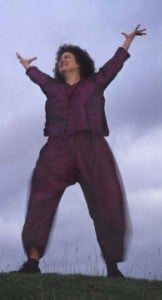
Cassandra Wye – In the Beginning
TSOTA: I hope that Settle won’t be too humdrum after that! Have you been to Settle Stories before?
CW: No. I’m looking forward to it. I’m a bit of a train buff and I’ve been wanting to go to Settle for years because of the train between Settle and Carlisle.
TSOTA: There are strong physical elements to your performance. What is one of your shows like?
CW: Settle Stories asked me to do two distinct shows, one very interactive, with a circus-style, movement-based approach, and one more more conventionally storytelling-based. The first, Tales from the Cosmos: Stories from the Daytime Sky, is very playful. This was commissioned by Settle Stories and created for them. It’s a mixture of Moon stories, linking to Chinese and other East Asian cultures and also sky stories from North American tradition.
I’d been asked to work with a North American storyteller, Lynn Moroney, who has done fabulous work collecting stories from her background. She’s in her 80s and she’s looking for somebody to take over that work, so she’s given me permission to tell her stories and develop her work, to build bridges between her culture and mine.
These stories will be fun for all the family: loud, exuberant, raucous storytelling. One of the stories, How the Archer Shot the Sun, is a Chinese legend that was shared to me by the Chinese community in Britain, and I take it back to China. It’s a story that fits this time of year – the mid-Autumn Moon festival will be coming to an end when I’m in Settle. That performance will have everyone joining in, shooting down the Sun and rescuing coyotes and finding out how the owl and the rooster fought over day and night.
The later performance, Stories of the Night-time Sky, is more narrative-based, with a sense of enchantment. We’re looking again at tales of the Moon, of the girl who comes from the Moon and wins an emperor’s heart, stories of how the stars were created from American Indian legend, and a Celtic story of a girl who journeys to the stars.
They’re very different performances, but that’s what I like about storytelling, that you can shift a performance to suit the mood of the day, the time, the venue and the people.
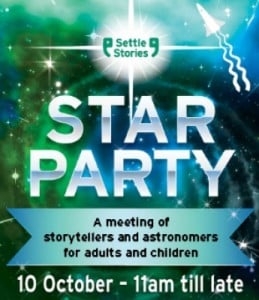
Settle Stories Star Party
TSOTA: Can you tell us about some of the other activities going on at the Star Party?
CW: Lynn Moroney’s work for the last 30 years was about how American Indians had explained science through stories. She worked with schools in Wyoming to create a whole science curriculum based around their sky lore. What I’m interested in is talking to astronomers and looking at it from their perspective. People have always made up stories to explain the world. What’s fascinating is to see the links between the stories created thousands of years ago, and the finds that people are discovering now.
I’m very interested in how people explain the world in story form and how scientists explain the world in science form: how the two go together and how we can make science accessible through story.
TSOTA: Is there tension between the scientific kind of ‘truth’ that other strands of the star party might be portraying, and the mythic kind of ‘truth’ that storytellers draw upon?
CW: I think they can be brought together. That’s what Lynn Moroney has done. Coming from a science background, I would love to continue on her work and develop it further. As a scientist and an artist, there are so many links between science and story. For example, thousands of years ago the Chinese created their calendar around the Moon because they noted the phases of the Moon and noticed that there was a pattern and they developed stories to explain those patterns.
It’s a great way of children understanding the passing of time, the passing of seasons and to know that certain times of year are good to do certain activities. People have been using stories to explain science for thousands of years and I don’t see a conflict.
I work a lot in education, and we desperately need more children to study science. It’s another way of inspiring children to want to learn. That’s why stories are told. It’s a great way of parents, teachers, scientists communicating their love, their understanding, their passion for the world.
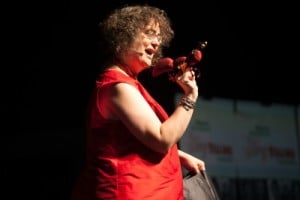
Cassandra and friend
TSOTA: Do you feel that you’re carrying on a very ancient tradition with storytelling?
CW: My grandfather was a gypsy and settled at the turn of the 20th century. My family have always told stories, for a hundred years and further back. The oral tradition is very much part of that culture. What I grew up with were stories my family shared, which gave me a sense of self. I knew who I was and I knew my place in space and time through the stories my family shared. I’m very much the storyteller my family trained me to be.
TSOTA: Is the immediacy of response that spoken word performers get very gratifying?
CW: I love the way stories change to meet the audience. You make that connection with people you’ve never met before, who may not share the same language and who come from a completely different background and have had a completely different life experience. It’s an amazing privilege, and the spoken word gives you this ability to connect with people.
The Settle Stories Star Party takes place on Saturday 10 October at various venues in Settle. Tickets can be booked via the Settle Stories website.
Mike Farren
Filed under: Theatre & Dance
Tagged with: Cassandra Wye, festival, interview, Lynn Moroney, performance, Science, settle, settle stories, Star Party, Storytelling, theatre
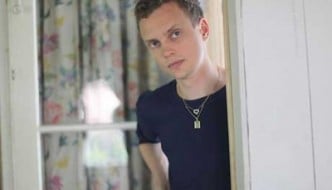
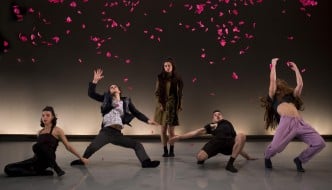

Comments